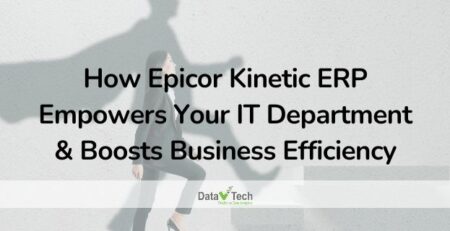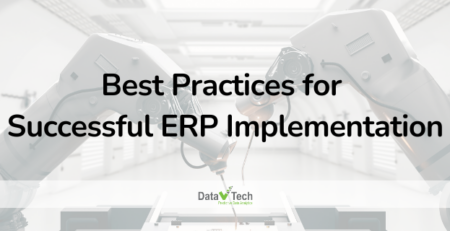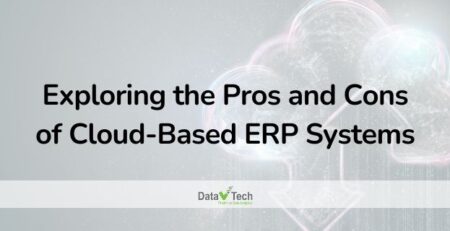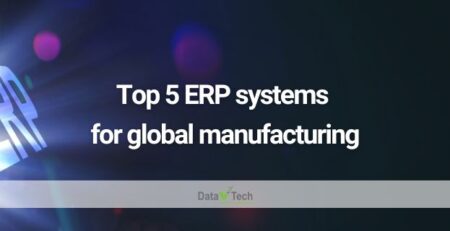Avoiding multiple mistakes can lead to the successful installation of an ERP system and save significant time and money. As ERP is the heart of each company’s operations, failure in system rollout can cost more than we can imagine. Data V Tech compiles seven well-known cases where the ERP implementation failed. Examining these scandals helps reveal several specific reasons for ERP implementation failure and critical lessons learned. Let’s get started!
“Instead of learning from other people’s success, learn from their mistakes. Most of the people who fail share common reasons (to fail) whereas success can be attributed to various different kinds of reasons.”
Jack Ma
Seven well-known cases of ERP implementation failure
- Covered Oregon – Excessive projects
- Mission Produce – Repetition of Covered Oregon’s mistake?
- National Grid – Insufficient testing
- Waste Management – Blind trust in the ERP provider
- MillerCoors – Wrong hiring or poor cooperation between two parties?
- Revlon – Rollout without meeting operational needs
- Hershey’s – Unrealistic timeline
Covered Oregon – Excessive projects
In 2012, Covered Oregon, the US’s state online healthcare marketplace, attempted to execute Obamacare and simultaneously replace all its supporting transaction processing systems. Despite the expense of over $300 million on the project, $134 million of which went to Oracle, Oregon could not process a single insurance application through the exchange.
So, what went wrong? Covered Oregon was unprepared for the massive volume of decisions, especially within a limited time frame. Consequently, it continuously made numerous bad decisions until the project became a fiasco in 2014. Both Oregon and Oracle filed lawsuits against each other after the incident.
Mission Produce – Repetition of Covered Oregon’s mistake?
Mission Produce, an international avocado distributor, commenced deploying an ERP system in November 2021. It aimed at improving operational visibility and financial reporting capabilities to support its growth worldwide.
Like Covered Oregon, Mission Produce couldn’t cope with the unpredictably massive magnitude of the ERP deployment project.
According to the avocado supplier’s CEO, Stephen Barnard, the company had difficulties managing its supply chain effectively during the first quarter of 2022 due to ERP implementation problems. Unreliable inventory and quality management and delays in customer invoicing automation raised its operating expenses to $4.1 million. Notably, ERP-related consulting costs accounted for approximately $1 million.
“While we weren’t naive to the risk of disruption to the business, the extent and magnitude was greater than we anticipated.”
Stephen Barnard, Mission Produce’s CEO
The CEO also stated he expects additional charges to be incurred in the second quarter for Mission’s daily work with the consultants to remediate problems.
National Grid – Insufficient testing
National Grid USA, part of National Grid plc, a multinational electricity and gas utility company headquartered in England, encountered severe challenges when implementing SAP ERP due to Hurricane Sandy. Based on the test results provided by Wipro, the parent company’s selected consulting firm, it decided to go live with the primary SAP implementation.
However, Wipro was unfamiliar with US regulatory environments. Meanwhile, the workload and emergency business processes increased gradually in response to the extensive electric grid repairs requirement after the hurricane. As a result, the previous testing results appeared insufficient due to the unanticipated project parameter changes. The system failed.
Ultimately, National Grid had to clean up enormous damages. The failure and failure-related costs exceeded the initial implementation expense, so National Grid decided to sue Wipro in 2017.
Waste Management – Blind trust in the ERP provider
SAP pitched to Waste Management that the company would achieve between $106 million and $220 million annually using its business solution. The European software provider also promised the implementation duration to be 18 months.
Without requiring proof of the estimation, Waste Management attempted to deploy the SAP software in the US in 2005.
The results did not fulfill SAP’s promises. And the system indeed caused more trouble than improving operations. Waste Management ended up in a $500 million lawsuit against SAP.
MillerCoors – Wrong hiring or poor cooperation between two parties?
MillerCoors hired HCL Technologies to implement its ambitious ERP project, which combined SAP warehouse management software known as Global Available-to-Promise (ATP) and Extended ATP. The initial cost was $53 million, but HCL added $9.6 million to the total expense due to further services.
In November 2015, the initial phase went live despite the official complaint revealing more than 50 known defects. Afterward, thousands of other defects became visible until MillerCoors decided to scrap the entire project and sue HCL in 2016.
As John P. Beardwood and Paula Millar explained in Computer Law Review International, the complex engagement took time and demanded considerable staffing contributions from both parties. Delays and cost overruns ultimately were the main reason for the breach of contract.
Revlon – Rollout without meeting operational needs
The merger with Elizabeth Arden in 2016 encouraged Revlon, the global cosmetics giant, to set up a central database encompassing all units. The selected software was ERP SAP S/4HANA, which aims to improve customer support and performance.
Unfortunately, the desired system never functioned properly. According to TFIPost, the SAP ERP project was the “last nail in the coffin” for Revlon. Reuters reported the company bore the expenses of $54 million to fix the ERP problems at Revlon’s Oxford, North Carolina, manufacturing facility. The ERP failure also allegedly resulted in sales loss, a drop in stock price, and investor lawsuits.
Hershey’s – Unrealistic timeline
Hershey Foods Corporation endured a disaster caused by the SAP ERP implementation in 1999.
“There is no doubt that 1999 was a most difficult and disappointing year for Hershey Foods Corporation. While the year got off to a slow start due to excessive retail inventories, we fully expected a strong finish in the second half of the year. Instead, the implementation of the final phase of the Corporation’s enterprise-wide information system created problems in the areas of customer service, warehousing and order fuffillment. These difficulties were exacerbated by our growth in recent years which had resulted in shipping capacity constraints. As a result, Hershey’s sales and earnings well short of expectations the year.”
KennethL Wolfe, Chairman & CEO, Hershey Foods Corporation
Here are the main critical mistakes in this project. First, Hershey’s timeline to implement its ERP system was unrealistic. Another reason was the project took place during Hershey’s peak sales season. Understandably, it would have been hard for its staff to master the complex advanced technology at that moment.
Lastly, the ERP rollout co-occurred with at least two other business systems. As a result, Hershey couldn’t have each opponent tested carefully as needed.
Reasons for ERP implementation failures
Based on the cases above, here are the common reasons why an ERP project fails:
- Lack of confirmation of system requirements
- No security of adequate funding
- Unrealistic implementation timelines
- Misguided capacity planning
- Focus on technology instead of business outcomes
- Wrong implementation partner
- Insufficient system testing before rollout
- Poor investment in change management
- Inadequate employee training
To avoid these mistakes, check out the list of what to prepare when deploying ERP here or reach out to us for a free consultation.
Action now to avoid unexpected, enormous, ruinous costs!









